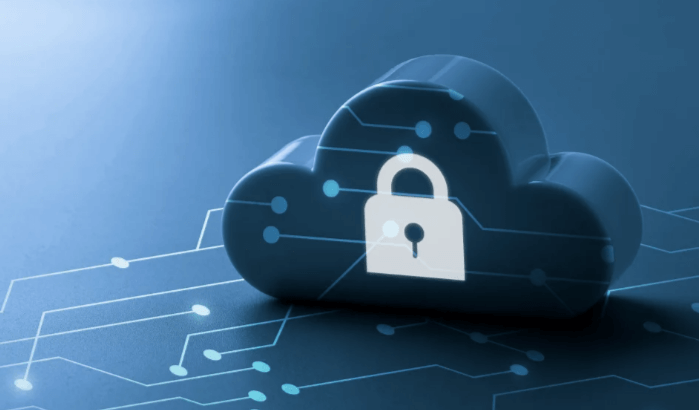What are the security challenges associated with the widespread adoption of cloud computing, and how are they being addressed?

Introduction
Cloud computing has revolutionized the way businesses operate by offering scalable, cost-effective, and flexible solutions for data storage and management. However, with the increased adoption of cloud services, significant security challenges have emerged. Understanding these challenges and the strategies to mitigate them is crucial for organizations to ensure the safety and integrity of their data.
Data Breaches in Cloud Environments
Data breaches are a major concern in cloud computing. The centralization of data in cloud environments makes them attractive targets for cybercriminals. When data is stored off-premises, the risk of unauthorized access increases, potentially leading to significant financial and reputational damage.
Insider Threats
Insider threats, whether malicious or accidental, pose significant risks to cloud security. Employees or contractors with access to sensitive data can misuse it, either intentionally or through negligence. This threat is exacerbated in cloud environments due to the broad access capabilities often provided to users.
Insecure Interfaces and APIs
Cloud services rely heavily on APIs for interaction between different software components. Insecure APIs can become entry points for attackers to exploit vulnerabilities, leading to unauthorized access, data leakage, and service disruption.
Account Hijacking
Account hijacking involves attackers gaining control of user accounts through phishing, credential stuffing, or exploiting vulnerabilities. Once an account is compromised, attackers can manipulate data, execute malicious activities, and cause significant harm to the organization.
Data Loss and Leakage
Data loss and leakage are critical issues in cloud computing. Whether due to human error, application vulnerabilities, or cyber-attacks, losing sensitive data can have severe consequences. Ensuring data integrity and preventing unauthorized access are vital components of cloud security.
Compliance and Legal Risks
Organizations must comply with various regulations and standards regarding data protection. Cloud service providers (CSPs) and their clients need to ensure that their operations align with legal requirements, such as GDPR, HIPAA, and others. Non-compliance can result in hefty fines and legal repercussions.
Shared Technology Vulnerabilities
Cloud environments often involve shared resources, such as infrastructure, platforms, and applications. Vulnerabilities in shared technologies can lead to attacks that affect multiple clients, making it essential to address these weaknesses proactively.
Lack of Visibility and Control
Migrating to the cloud can result in reduced visibility and control over data and operations. Organizations might struggle to monitor activities, detect anomalies, and enforce security policies effectively in a cloud environment.
Security Misconfigurations
Improper configurations of cloud resources can create vulnerabilities. Misconfigured storage buckets, databases, or applications can expose sensitive data to unauthorized access. Ensuring correct configuration is critical for maintaining cloud security.
Denial of Service (DoS) Attacks
DoS attacks aim to disrupt the availability of cloud services by overwhelming them with traffic. Such attacks can cripple business operations, resulting in financial losses and damage to customer trust.
Insufficient Due Diligence
Organizations often rush to adopt cloud services without conducting thorough due diligence. Failure to assess the security measures and practices of CSPs can lead to adopting services that do not meet security standards.
Virtualization Vulnerabilities
Cloud environments heavily rely on virtualization technologies. Vulnerabilities within hypervisors or virtual machines can be exploited to compromise the entire cloud infrastructure, affecting multiple clients.
Addressing Security Challenges in Cloud Computing
Organizations should enforce strong access control mechanisms, including multi-factor authentication (MFA), to prevent unauthorized access. Limiting access to sensitive data and critical systems is essential for minimizing the risk of breaches.
Implementing continuous monitoring and having an effective incident response plan are crucial for detecting and mitigating security threats promptly. Monitoring tools can identify suspicious activities, while a well-defined incident response plan ensures swift action.
Encryption and Data Protection
Encrypting data both at rest and in transit is fundamental for protecting sensitive information. Strong encryption algorithms and key management practices help safeguard data from unauthorized access.
Regular Security Audits and Assessments
Conducting regular security audits and assessments helps identify vulnerabilities and ensures compliance with security standards. Audits can reveal misconfigurations, weak points, and areas for improvement.
Securing APIs and Interfaces
Implementing security best practices for APIs, such as using secure protocols, authentication, and regular testing, helps protect against API-related vulnerabilities. Ensuring APIs are securely configured reduces the risk of exploitation.
Employee Training and Awareness
Educating employees about security best practices and the risks associated with cloud computing is vital. Regular training programs can reduce the likelihood of insider threats and promote a security-conscious culture.
Compliance Management
Maintaining compliance with relevant regulations and standards is essential. Organizations should work closely with CSPs to ensure that their services meet legal requirements and implement appropriate security controls.
Enhanced Visibility and Control
Implementing tools that provide enhanced visibility and control over cloud environments helps organizations monitor activities, enforce policies, and detect anomalies. Security information and event management (SIEM) systems can be beneficial.
Utilizing Security Services from CSPs
Many CSPs offer robust security services and features, such as identity and access management, threat detection, and encryption. Leveraging these built-in security services can enhance overall cloud security.
Regular Updates and Patch Management
Ensuring that all software and systems are regularly updated and patched is crucial for protecting against known vulnerabilities. Keeping systems up-to-date reduces the risk of exploitation by attackers.
Implementing Strong Network Security
Utilizing firewalls, intrusion detection systems (IDS), and intrusion prevention systems (IPS) helps protect cloud environments from network-based attacks. Network security measures are critical for maintaining a secure cloud infrastructure.
Zero Trust Security Model
Adopting a zero trust security model, which assumes no inherent trust within the network, can enhance cloud security. This model enforces strict access controls, continuous monitoring, and verification of all entities accessing the network.
Best Practices for Securing Cloud Computing
A comprehensive cloud security strategy should encompass policies, procedures, and technologies to address security challenges. This strategy should be regularly reviewed and updated to adapt to evolving threats.
Collaboration Between IT and Security Teams
Effective collaboration between IT and security teams ensures that security measures are integrated into cloud deployments from the outset. This collaborative approach helps identify and mitigate risks early.
Engaging with Trusted CSPs
Selecting reputable and trusted CSPs with strong security practices is crucial. Organizations should evaluate CSPs based on their security certifications, track record, and adherence to industry standards.
Implementing Data Backup and Recovery Plans
Having robust data backup and recovery plans ensures business continuity in case of data loss or cyber-attacks. Regular backups and testing of recovery procedures are essential components of cloud security.
Leveraging Artificial Intelligence (AI) and Machine Learning (ML)
AI and ML can enhance cloud security by identifying patterns, detecting anomalies, and automating threat response. These technologies help organizations stay ahead of emerging threats.
Cloud Security Trends and Future Directions
The rapid advancement of cloud security technologies, such as AI, blockchain, and advanced encryption, is shaping the future of cloud security. These innovations offer new ways to protect data and mitigate risks.
Increasing Focus on Data Privacy
Data privacy concerns are driving the development of stricter regulations and more sophisticated privacy-preserving technologies. Organizations must prioritize data privacy to comply with laws and maintain customer trust.
Adoption of Hybrid and Multi-Cloud Environments
The trend towards hybrid and multi-cloud environments introduces new security challenges and opportunities. Organizations must develop strategies to secure data and applications across diverse cloud platforms.
FAQs
What are the main security challenges in cloud computing? The main security challenges in cloud computing include data breaches, insider threats, insecure APIs, account hijacking, data loss, compliance risks, shared technology vulnerabilities, lack of visibility, security misconfigurations, and DoS attacks.
How can data breaches in cloud environments be prevented? Data breaches can be prevented by implementing strong access controls, encryption, continuous monitoring, regular security audits, and employee training on security best practices.
What role do APIs play in cloud security? APIs are crucial for cloud interactions but can be vulnerable to attacks. Securing APIs through authentication, secure protocols, and regular testing helps protect against exploitation.
How important is compliance in cloud computing? Compliance is essential to avoid legal repercussions and ensure data protection. Organizations must adhere to relevant regulations and work with CSPs that meet compliance standards.
What is a zero trust security model? A zero trust security model assumes no inherent trust within the network and enforces strict access controls, continuous monitoring, and verification of all entities accessing the network.
How can organizations enhance visibility and control in cloud environments? Enhanced visibility and control can be achieved through monitoring tools, SIEM systems, and leveraging CSPs’ security features to enforce policies and detect anomalies.
Conclusion
The widespread adoption of cloud computing presents significant security challenges that organizations must address to protect their data and operations. By implementing robust security measures, conducting regular assessments, and fostering a security-conscious culture, businesses can mitigate these risks and leverage the benefits of cloud computing with confidence.





